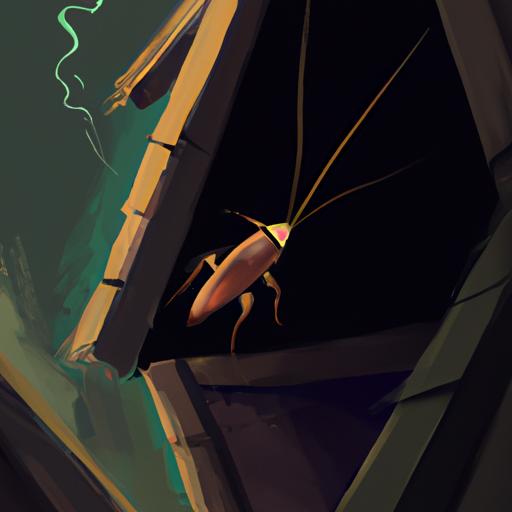Have you ever wondered what the difference is between cockroaches and earthworms? These two creatures, while different in appearance, have more in common than you might think.
In this article, we’ll make a comparison of cockroaches and earthworms, looking at their appearances, body parts, movement, diet, reproduction, adaptability, and environmental impact.
So, let’s dive in and explore the fascinating similarities and differences between these two critters.
Table of Contents
Short Answer
Cockroaches and earthworms are two very different creatures.
Cockroaches are insects that have wings and are capable of flight, while earthworms are invertebrates that have no wings and do not fly.
Cockroaches are omnivores that feed on a variety of items including plants, fruits, and insects, while earthworms are detritivores that feed on decaying plant matter.
Both cockroaches and earthworms can be found in a variety of habitats, but cockroaches are much more likely to be found indoors, while earthworms are more commonly found in soil or compost.
Comparison of Appearances
When it comes to differences between cockroaches and earthworms, one of the most obvious is their appearance.
Cockroaches are insects, while earthworms are annelids, a type of segmented worm.
Cockroaches typically have three body parts – the head, thorax, and abdomen – as well as six legs, one pair of antennae, and two compound eyes.
In contrast, earthworms have many body parts and no eyes.
Their bodies are segmented, with each segment having its own set of organs.
The most noticeable feature of earthworms is the clitellum, which is a thickened part of their body used for reproduction.
Cockroaches are often brown or black in color and can range in size from a few millimeters to a few centimeters.
Earthworms can vary in color from a pale pink to a dark brown, and they range in size from a few millimeters to a few feet long.
In addition to their physical differences, cockroaches and earthworms move differently.
Cockroaches typically move by running or flying, while earthworms move through the soil by using their setae, which are small bristles on their bodies.
Finally, cockroaches and earthworms have different diets.
Earthworms feed mainly on organic matter in the soil, while cockroaches feed on a variety of food sources, including decaying plant and animal matter.
Body Parts

When it comes to body parts, cockroaches and earthworms are quite different. Cockroaches have three body parts: head, thorax, and abdomen. They have six legs, one pair of antennae, and two compound eyes. In contrast, earthworms have many body parts and no eyes. They have a segmented body with a clitellum, which is a thickened part of their body used for reproduction. The clitellum is found just behind the head and is a darker color than the rest of the body. Earthworms also have a mouth, four sets of bristles, and a pre-anal sucker at the end of their body. The bristles help them move through the soil, while the pre-anal sucker helps them attach to objects and surfaces. In addition, earthworms have a crop and a gizzard, both of which are used for digestion. They also have a flap called the epidermis, which helps them absorb oxygen from the soil.
Movement
When it comes to movement, there are some major differences between cockroaches and earthworms.
Cockroaches are among the fastest land insects, and they typically move by running or flying.
In comparison, earthworms move through soil by burrowing and tunneling.
The worms have a segmented body that helps them wiggle and squirm through the dirt.
This movement helps them to feed on organic matter which is found in the soil.
Earthworms also have a clitellum, a thickened part of their body used for reproduction.
This area helps them move forward and backward, allowing them to move more quickly through the soil.
In contrast, cockroaches have three body parts and six legs, but no clitellum.
This makes their movement more limited, although they can still travel long distances.
Overall, cockroaches and earthworms differ in their locomotion capabilities.
Cockroaches are fast land insects that move by running or flying, while earthworms have a segmented body and clitellum that helps them move quickly through soil.
Diet

When it comes to diet, cockroaches and earthworms have some key differences.
Cockroaches are omnivores, meaning they feed on a variety of food sources, including decaying plant and animal matter.
In contrast, earthworms are detritivores, meaning they feed on organic matter, such as leaves, dead animals, and other decaying material.
When it comes to food preferences, cockroaches prefer food sources that are high in carbohydrates and proteins, such as bread, sugary foods, and meats.
On the other hand, earthworms prefer foods that are high in cellulose, such as leaves and other plant matter.
They also feed on decaying animal matter, fungi, and bacteria.
In terms of feeding habits, cockroaches are usually active during the night and will often feed on whatever food sources are available.
Earthworms, however, are usually active during the day and will typically feed in the top layers of the soil.
Cockroaches tend to feed on whatever food sources they can find, while earthworms are more selective in their feeding habits and will usually only feed on certain types of food.
Furthermore, cockroaches are often found in close proximity to humans, while earthworms are usually found in more rural areas, such as gardens and farms.
Reproduction
When it comes to reproduction, cockroaches and earthworms have some key differences.
Cockroaches reproduce through a process called parthenogenesis, in which the female produces an egg without fertilization from a male.
This process is called asexual reproduction.
In contrast, earthworms reproduce sexually.
During reproduction, a pair of earthworms will join together in a process called mating.
The male will transfer sperm to the female, which then develops into a cocoon.
This cocoon will then develop into baby worms.
When it comes to the reproductive organ that each species uses, cockroaches have an organ called the ovipositor, which is a tube-like structure that is used to lay eggs.
Earthworms, on the other hand, have a clitellum, which is a thickened band of tissue that encircles their body and is used for reproduction.
In addition, cockroaches have a very short reproductive cycle, with some species capable of producing multiple generations in a year.
Earthworms, however, have a much longer reproductive cycle, taking several months to complete a single generation.
Overall, when it comes to reproduction, cockroaches and earthworms have some key differences.
Cockroaches reproduce asexually, while earthworms reproduce sexually.
Cockroaches have an ovipositor, while earthworms have a clitellum.
Lastly, cockroaches have a short reproductive cycle, while earthworms have a longer one.
Adaptability

When it comes to adaptability, cockroaches and earthworms have plenty of differences.
Cockroaches are well-known for their adaptability, able to survive in a wide range of environments and climates.
They are even able to survive in extremely harsh and hostile conditions, like low temperatures and radiation.
On the other hand, earthworms are much less adaptable and thrive in moist environments with plenty of organic matter, such as soil.
They are unable to survive in drier conditions and do not fare well in extreme temperatures.
Cockroaches are able to survive in a much wider range of conditions than earthworms, making them more versatile and able to survive in a variety of places.
They are also able to move quickly and are strong flyers, able to take off quickly in a pinch.
Earthworms, on the other hand, are much slower and can only crawl on the ground.
They are unable to take off and fly, making them less versatile.
Overall, cockroaches are much more adaptable than earthworms, giving them the advantage in terms of survival and mobility.
They are able to survive in a wider range of conditions and are much faster and more agile than their earthworm counterparts.
Environmental Impact
When it comes to the environmental impact of cockroaches and earthworms, there is an interesting distinction between the two species.
Cockroaches, being insects, can spread diseases and contaminate food, but they are also beneficial because they help break down organic matter and recycle nutrients back into the soil.
Earthworms, on the other hand, play an important role in soil health by aerating the soil, enhancing water retention, and aiding in the decomposition of organic matter.
They also help to promote plant growth by increasing the availability of nutrients in the soil.
While both species can be beneficial in their own way, earthworms have a much greater impact on the environment due to their ability to improve soil fertility.
Final Thoughts
In conclusion, cockroaches and earthworms have many differences, from their appearances to their diets, movement, and even how they reproduce.
While both are important components of the ecosystem, cockroaches are able to adapt to a wide range of environments and have a greater environmental impact.
This makes them a valuable source of study for scientists seeking to understand the impact of climate change and other environmental factors.
With this in mind, it’s important to remember the importance of both species and their unique differences.

